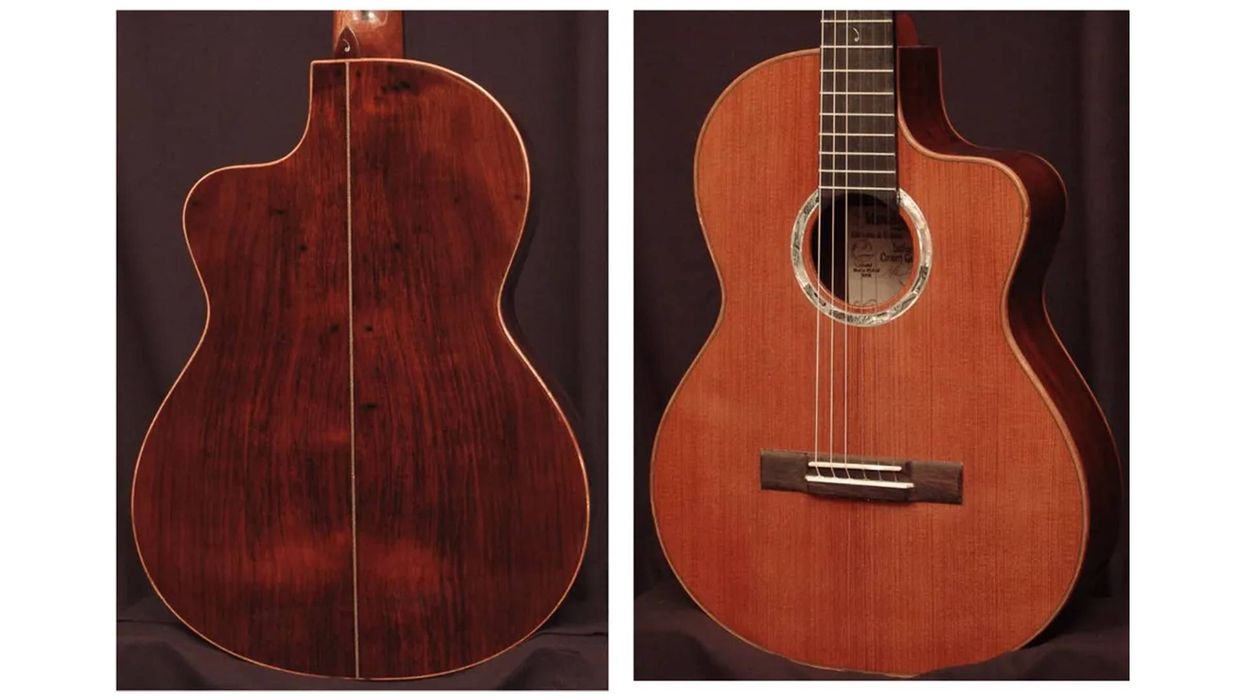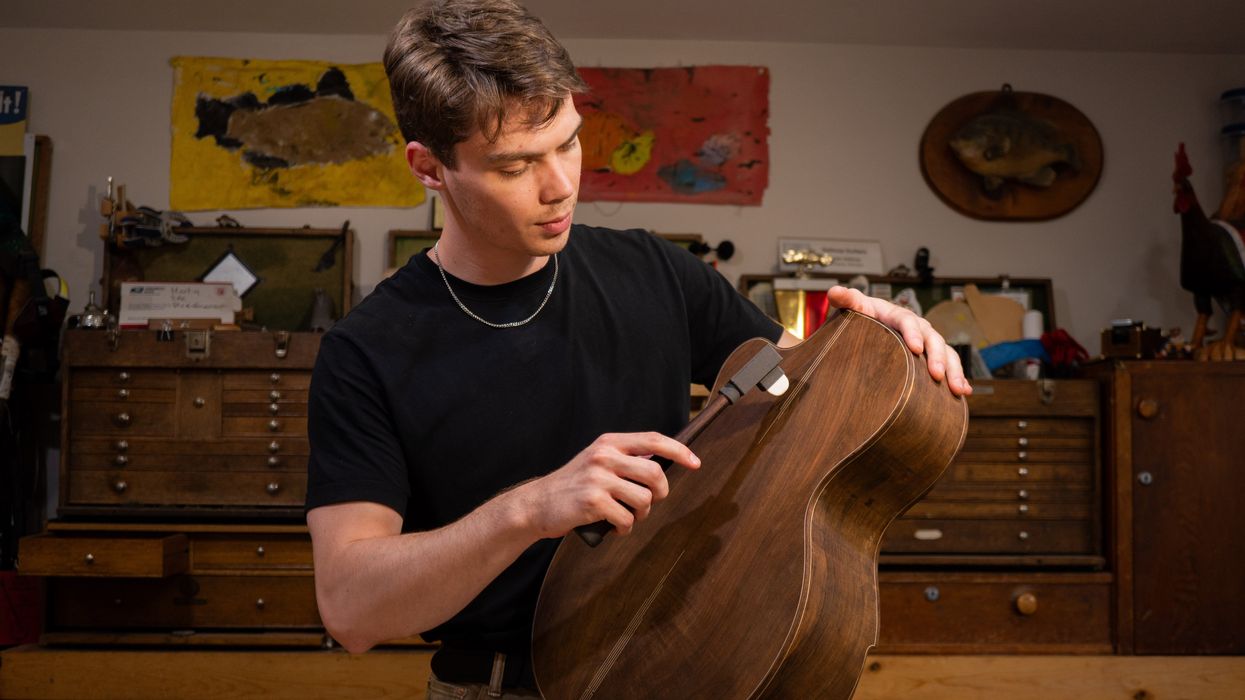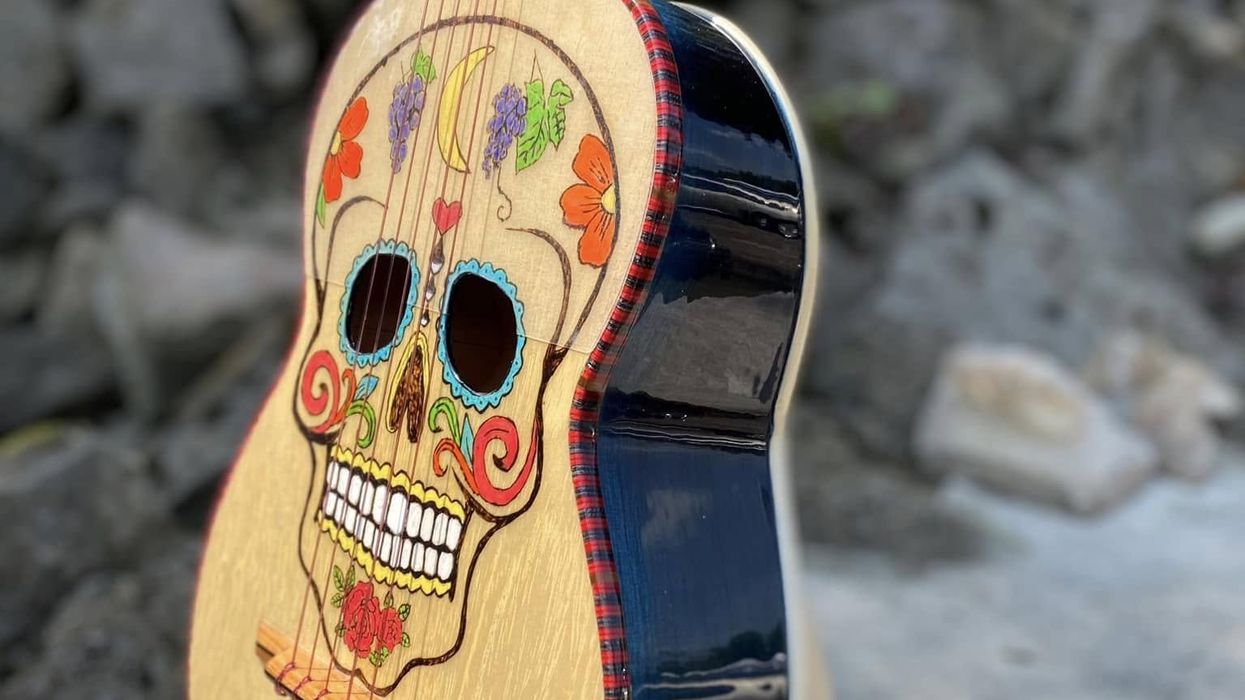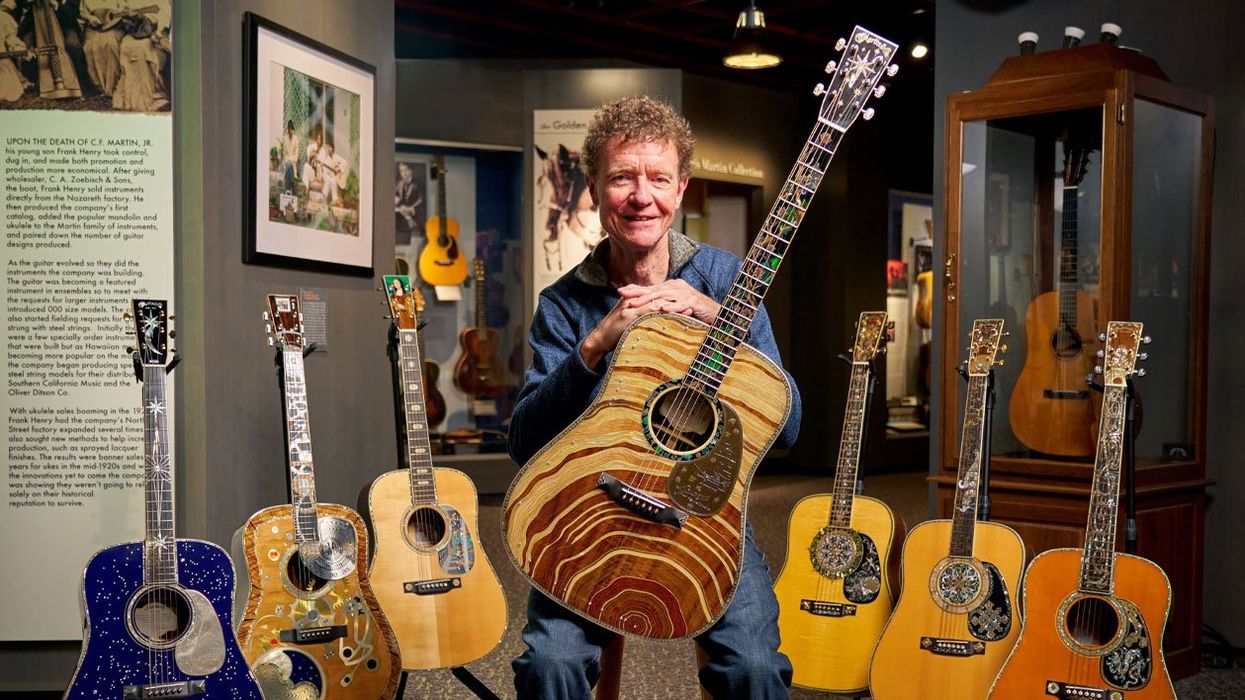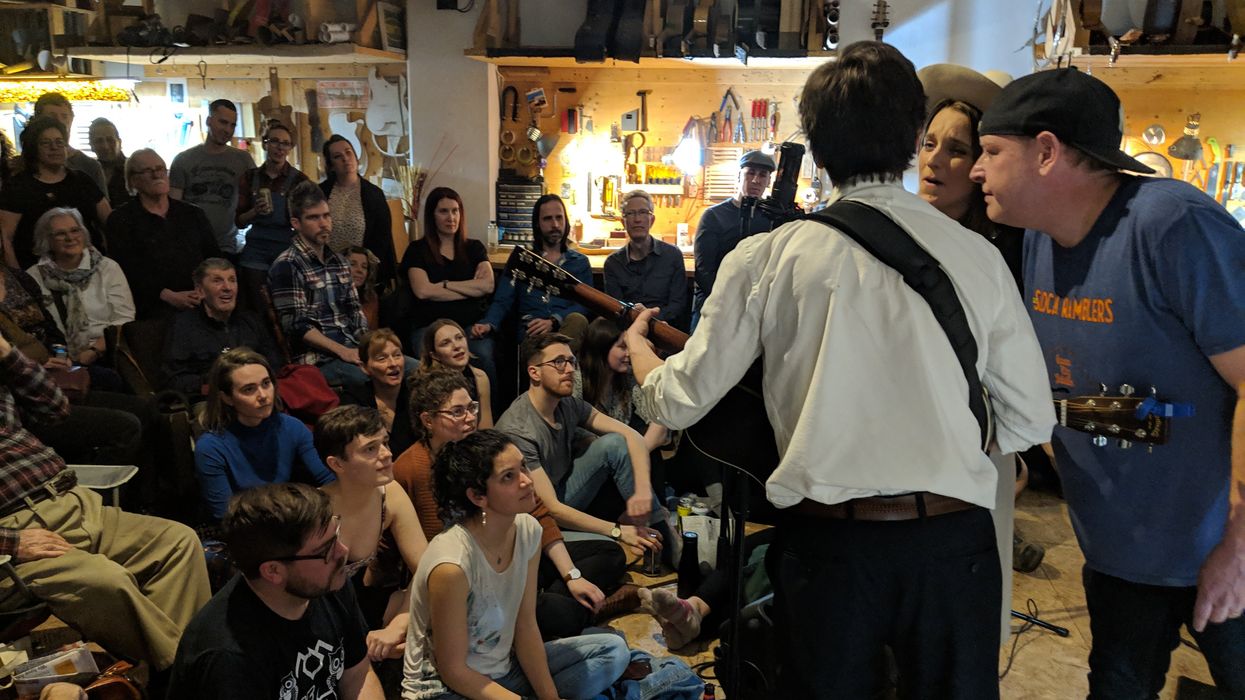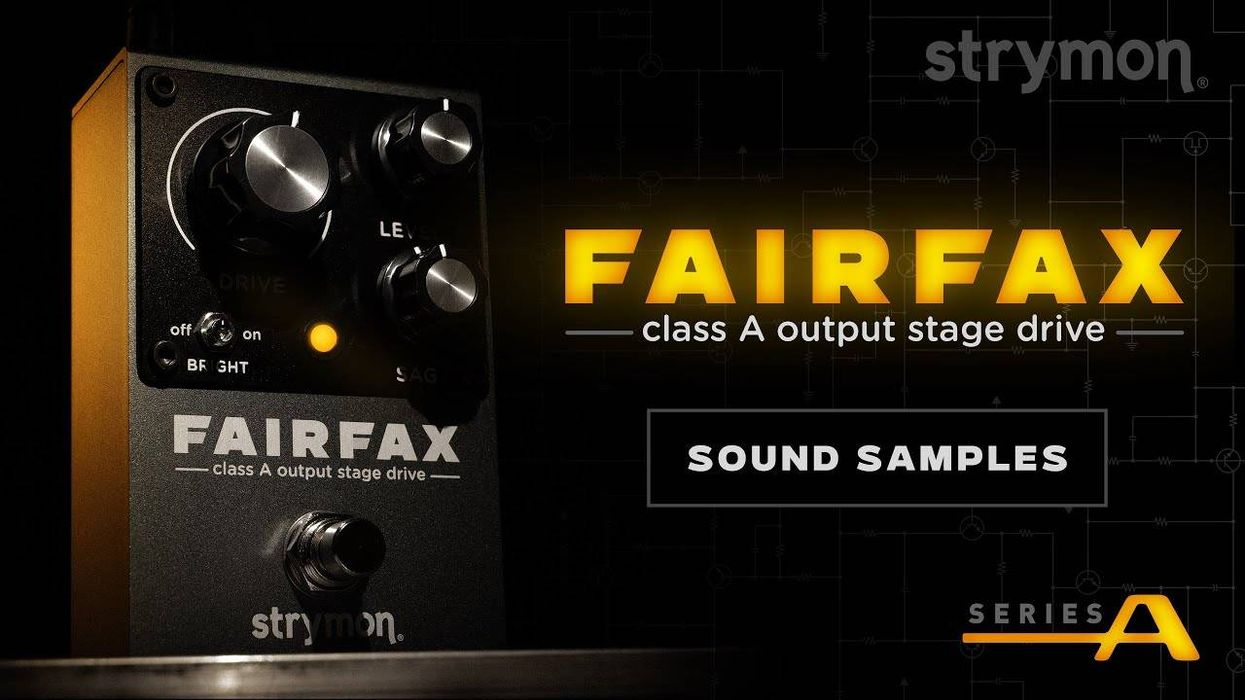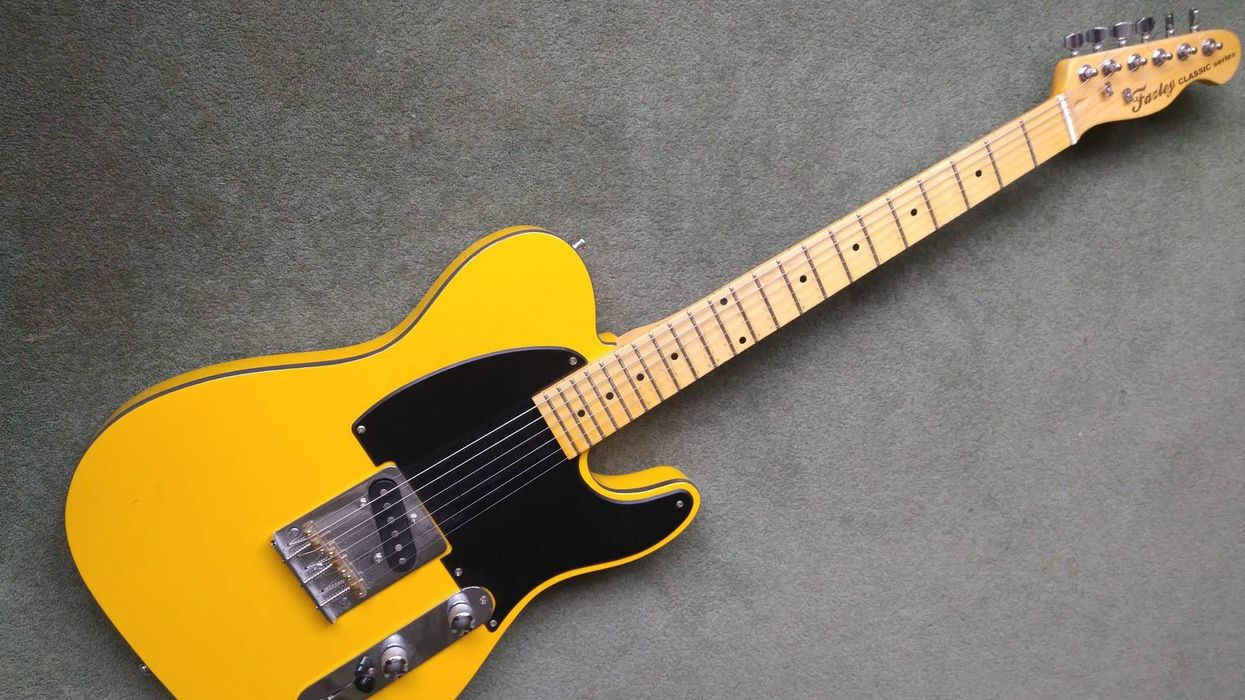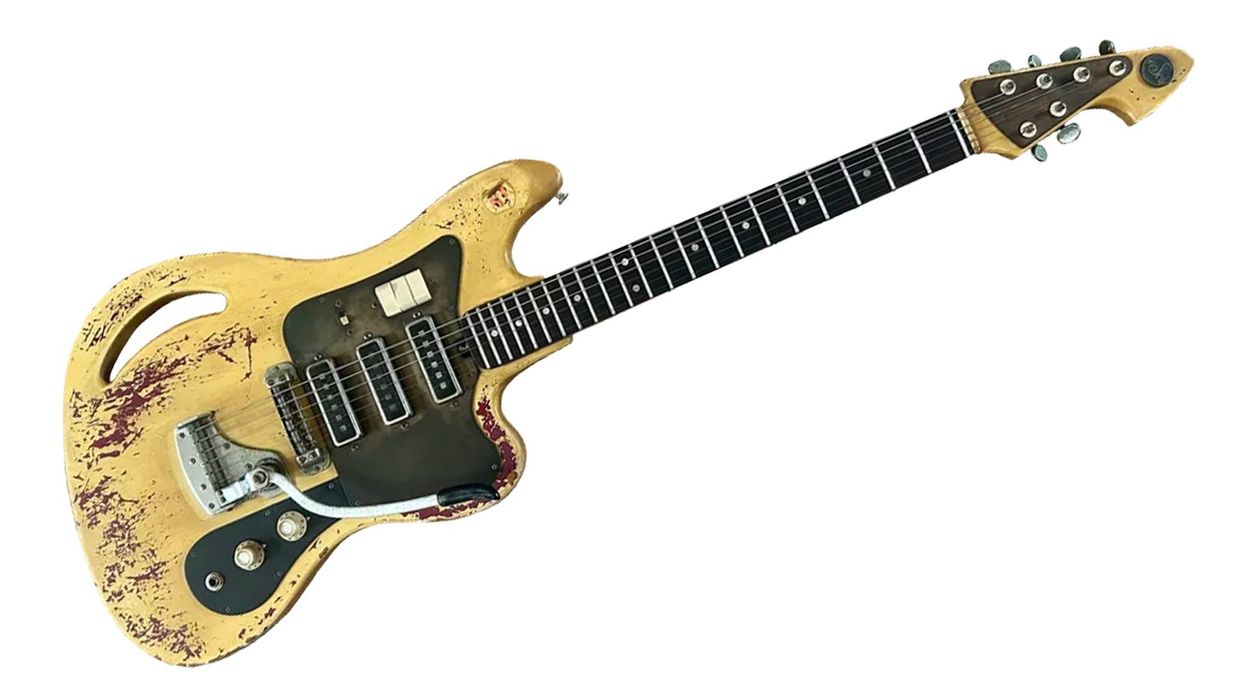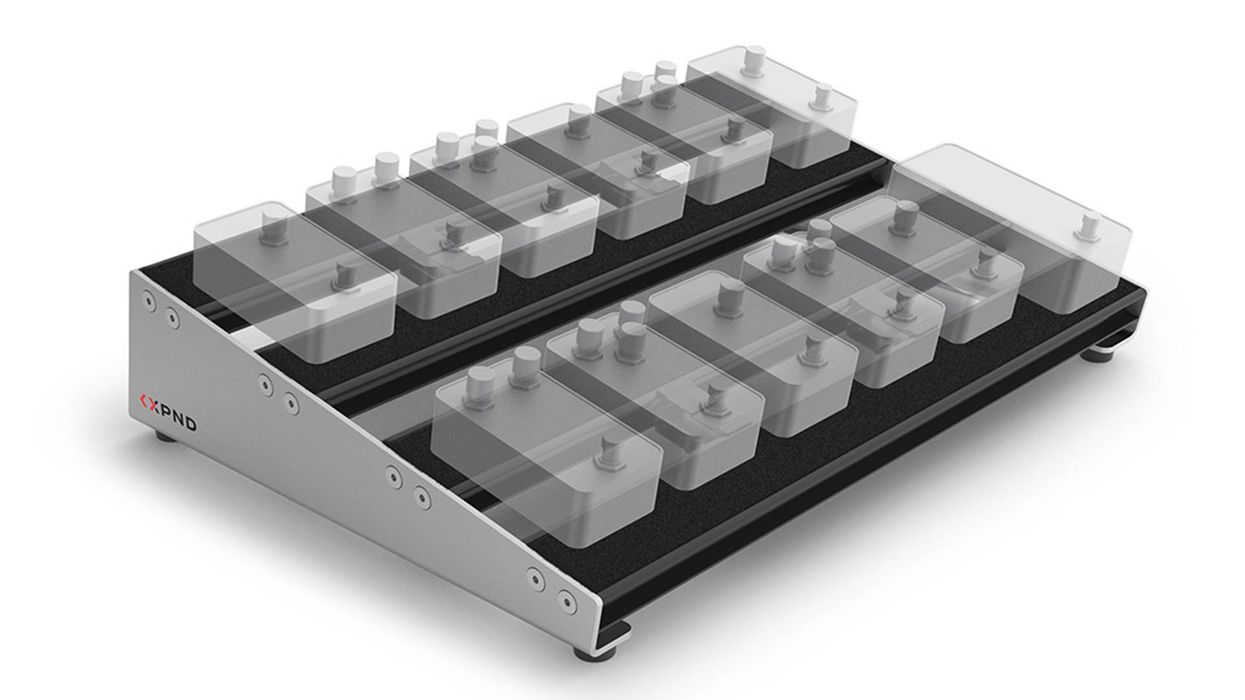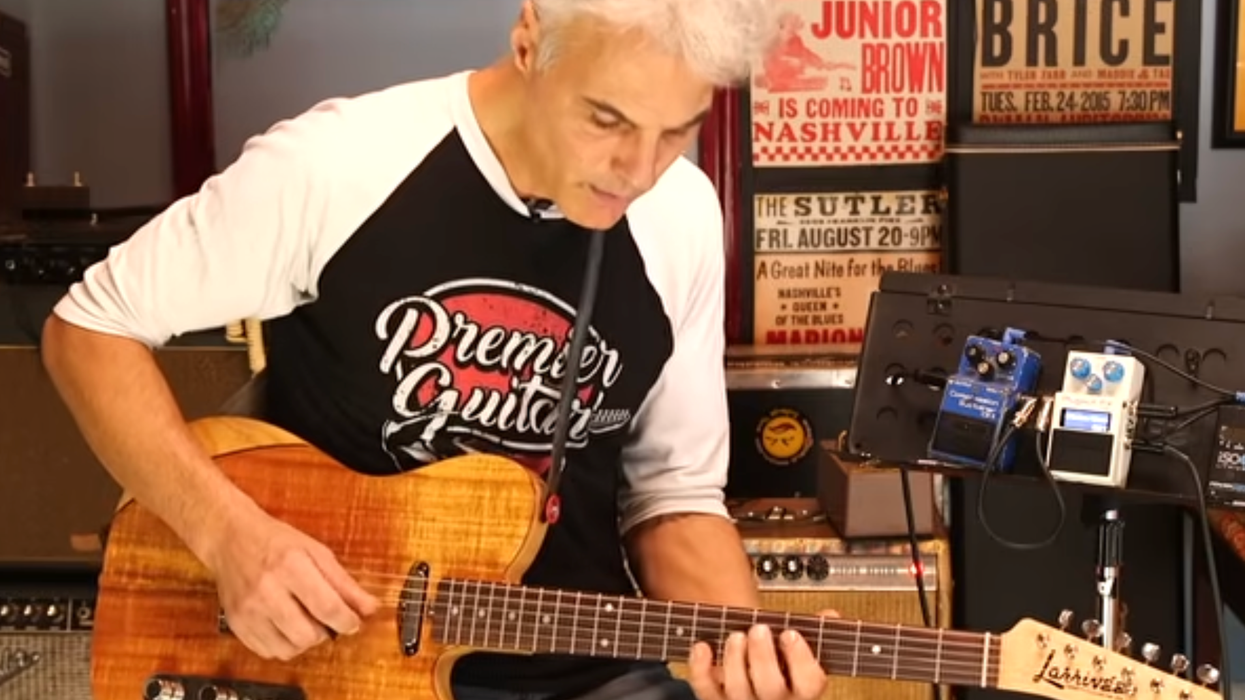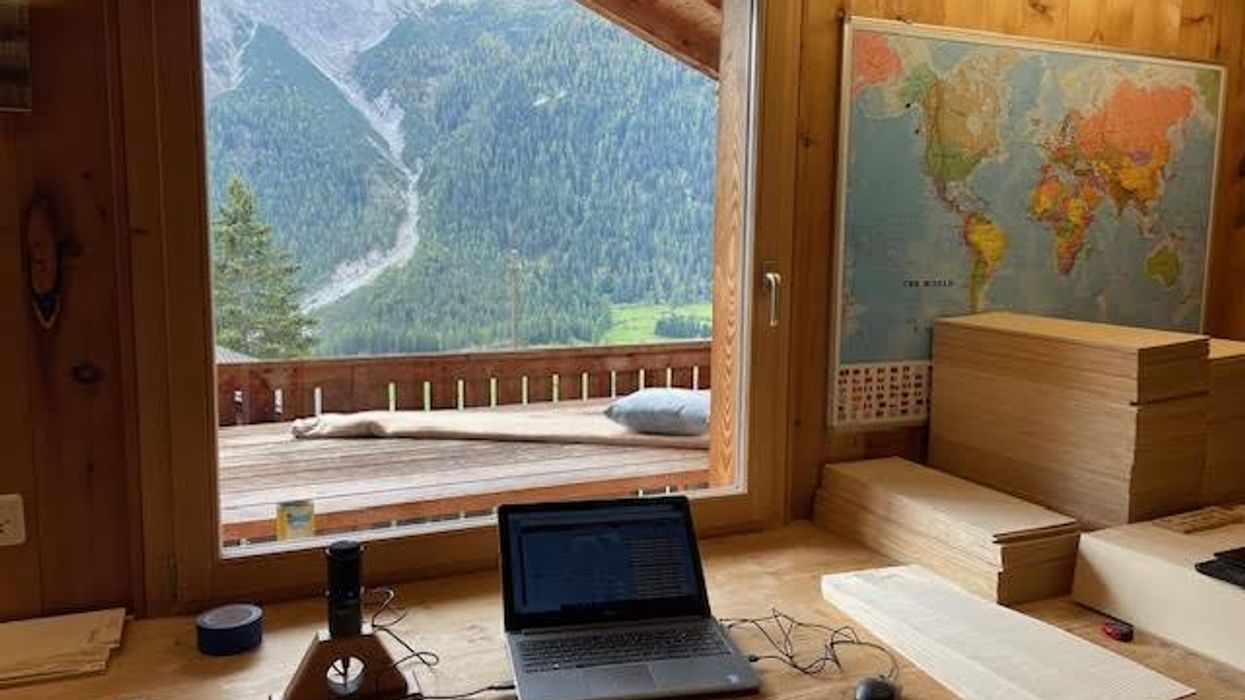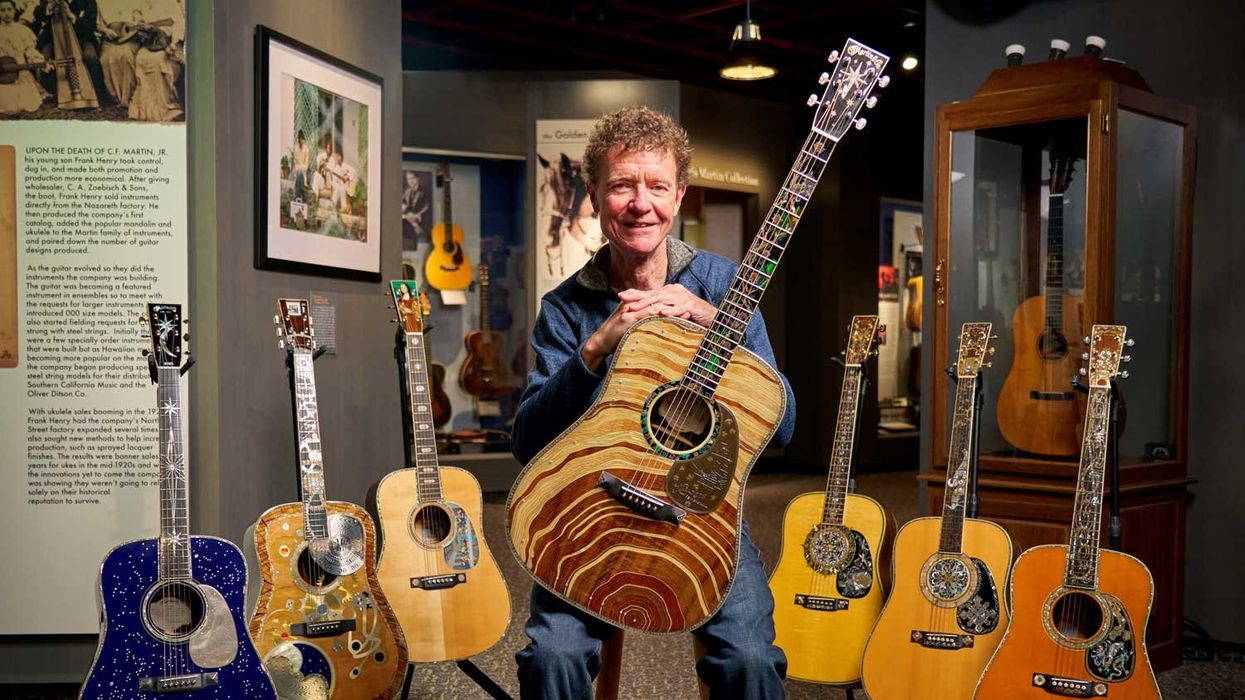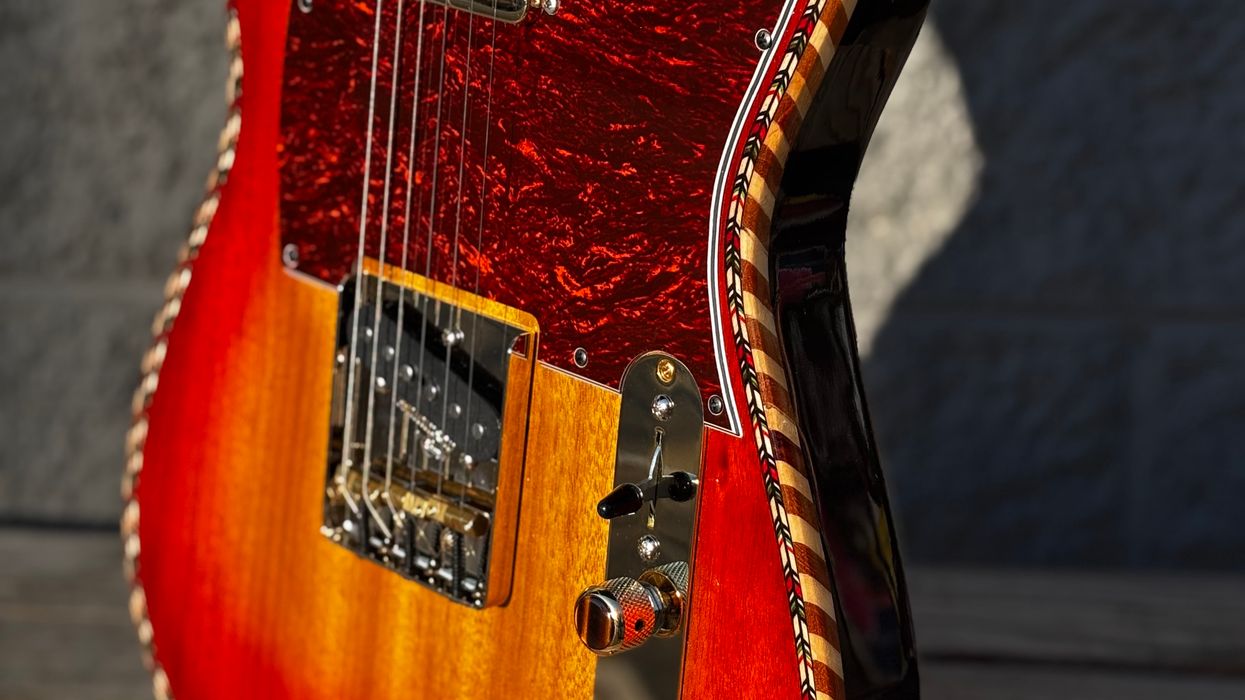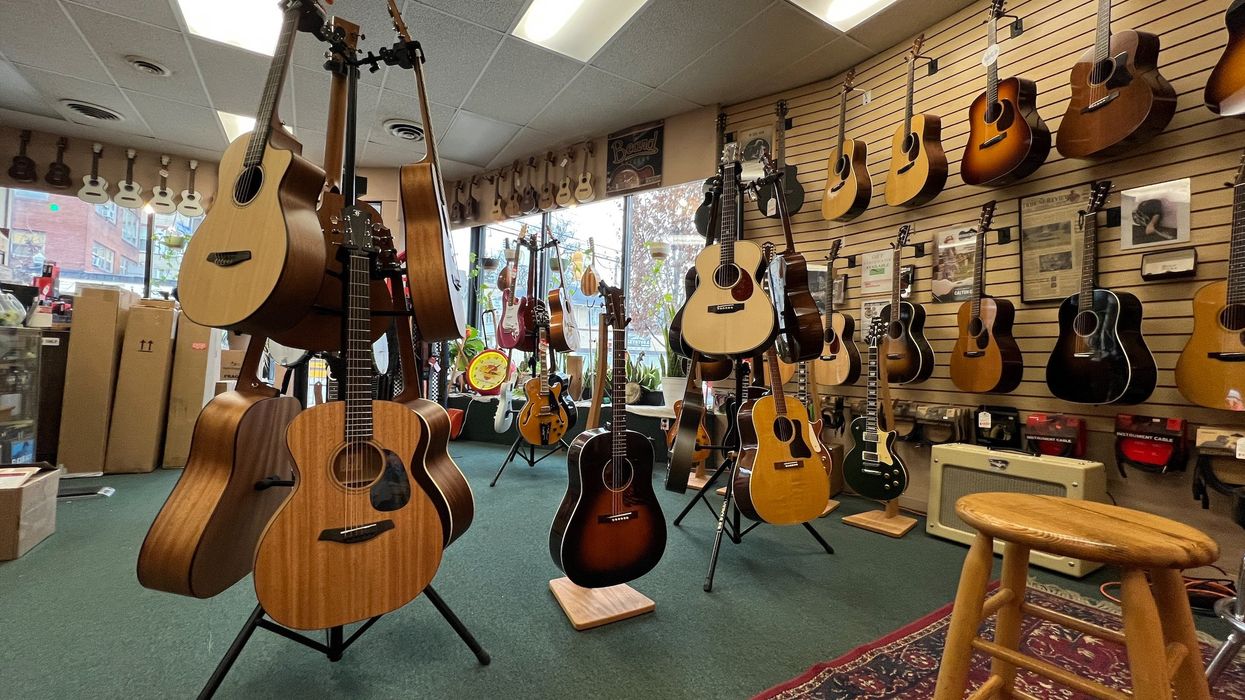How rigid and flexible woods are mated to create the magic of acoustic guitars.
When guitar makers are asked about wood, the questions are often about what certain woods sound like. While we do our best to describe the different sonic flavors like the seasonings in a spice rack, it’s easy to get lost in the subtleties without first explaining the fundamental relationship between two other important contributors to tone: how an acoustic guitar actually works and the different personalities of trees.
As an object designed to amplify vibration, the acoustic guitar has two objectives. It needs to be flexible enough to bend with each vibration to displace air and produce audible volume, and it needs to be rigid enough to allow strings to vibrate for a long time. So right from the start, there must be a compromise between rigidity and flexibility. But let’s set this conflict aside for a moment to break down the basic signal chain of acoustic sound.
The strings a player sets in motion are attached to the soundboard. (Think of the soundboard like a drumhead.) The soundboard vibrates and sets the air inside the body in motion, causing it to move against the back of the guitar. While some movement is transferred through the sides of the guitar to the back, most of the action is the body of the guitar acting like an air pump. As the soundboard squeezes and tugs on the air in and around the body, the air is displaced, creating audible sound waves. To make more volume, this “air pump” needs to be made efficient.
As mentioned, rigidity is the key to making the notes last a long time. If the structure that supports the strings is strong and rigid, it won’t bend and absorb the strings’ vibrations. The stiffer the neck and body are, the longer the strings tend to continue vibrating
In other words, flexibility equates to volume and rigidity equates to sustain. And both are, of course, important. After looking at the mechanics of the signal chain, it becomes clearer that some parts need to vibrate easily, while others need to be solid. It’s like a band, in the sense that each instrumentalist has a different role to play and, therefore, different job requirements. On a guitar, these criteria can be met with different types of tonewoods.
While some movement is transferred through the sides of the guitar to the back, most of the action is the body of the guitar acting like an air pump.
Coniferous vs. Deciduous.
Acoustic guitars are essentially made from two kinds of wood. The first is from coniferous trees that have cones and needles, and hang on to their needle-shaped leaves. (Picture a Christmas tree.) The second comes from deciduous trees. These drop their leaves and grow new ones, like a maple tree that is bare in winter and looks like an umbrella in the summer. The two tree types have very different personalities. Coniferous trees tend to grow wood that is strong, but doesn’t weigh much. Deciduous trees (the leaf droppers) tend to grow wood with more homogenous consistency and weights commensurate with their strength.
The conifers grow their strong and lightweight wood by making a sandwich of soft, light layers in between thinner bands of hard, strong layers. Together, the result is like the structural I-beams used in skyscrapers. Material put together this way can vibrate like crazy, and because it doesn’t weigh much, it doesn’t require much force (or string power) to get it moving. Its springy nature acts like a speaker cone for the strings and it also has a resilient character that resists deformation while vibrating. This is the perfect wood for making a guitar top. And, as expected, we see instrument tops made with coniferous trees like spruces, cedars, and even firs.
Deciduous tree wood, by contrast, doesn’t have the same I-beam-like composition or the same tendency as coniferous tree wood to be stronger than its weight would suggest. Because deciduous tree wood doesn’t grow this way and has weight that is equivalent to its strength as a result, it doesn’t vibrate so easily.
If you think of the guitar body as a speaker cabinet, the goal is to make the top (or speaker) vibrate and set air in motion while surrounded by an enclosure robust enough to not immediately move with this motion. If the entire enclosure was allowed to move freely, the effect would be like a finger poking into one side of an inflated balloon—where the rest of the balloon would simply change shape to absorb the indentation—negating the movement that produces both volume and sustain.
Smart luthiers figured this out centuries ago, and we’ve been playing and hearing variations on this construction ever since. The subtleties of exactly how strong the cabinet of a guitar is and exactly how flexible the top of a guitar is—or should be—are topics we’ll continue to write novels about. But the basic point to remember is that each part has a different role to play, and as a result, guitars are made of trees that grow in different ways.




